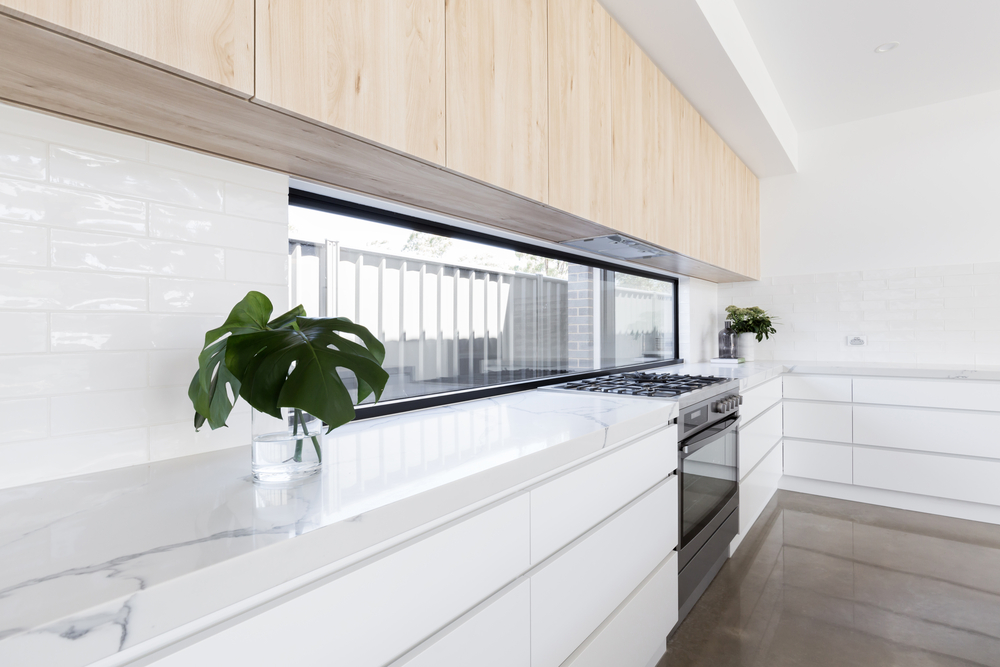Renovations: Should You DIY or Hire a Pro?
Index
Want to give your home a facelift, but not sure whether to tackle it yourself or call in the renovating pros? Not everyone is a natural on the power tools.
Take this quiz to find out whether you should DIY your home renovations or not.
Now you know the right approach, it’s time to get cracking on your DIY home projects. Whether you’re a DIY master or you’ll be taking a hands-off approach, we’ve got some great tips to help you renovate a house on a budget.
10 Tips to Cut Your House Renovation Costs

Renovating your home can be exciting – but it can also be pricey. If you’re not careful, your house renovation costs can quickly add up, and before you know it, you’ve blown the budget.
These 10 tips can help you cut costs on your DIY home projects so you can enjoy your dream house without breaking the bank.
1. Use ‘Lookalike’ Materials
Have your heart set on that pricey imported marble, but not sure if you can justify the price tag? Thanks to cheaper (but not inferior) lookalike materials such as granite, you can still get the look you love without going over budget.
The same goes for expensive timber and tiles – you can generally find a more affordable alternative material that offers the same look.
Opt for affordable alternatives to your favourite materials. Granite is a great substitute for marble, while cherry wood costs a fraction of the price of mahogany, yet offers an almost identical look.
2. Do Your Research and Get Quotes

Whether you’re hiring professionals for the entire renovation or you’re just relying on them for a few bigger projects, be sure to do your research before you book them in. Check out reviews to see what past clients thought of their work, and get some quotes to compare prices. If they have an online gallery of past projects, it’s worth having a browse to see if their style suits you (and to get some inspiration).
Shop around before committing to a contractor. Consider reputation, price and past jobs before hiring someone. You can compare quotes for contractors in your area with Yellow Quotes.
3. Do Your Own Demolitions
You don’t have to be a pro at DIY home projects to knock down some walls. If you’ve got contractors coming in to work on your renos, tackling the demo work yourself can save you hundreds of dollars. Just be sure to go slow and take care – the last thing you want is to take out a load-bearing beam or cut into wires.
Check out some online tutorials to learn the basics of safe DIY demolitions.
4. Plan Around Your Plumbing

Moving your plumbing can be one of the biggest expenses of your home renovations. If you’re renovating a house on a budget, the last thing you’ll want to do is rearrange the layout of your sinks, showers, or toilets. If you’re not sure how to renovate a bathroom or kitchen without spending your entire budget, start by planning your upgrades around your plumbing.
Keeping the layout of your plumbing can save you hundreds or even thousands of dollars.
5. DIY What You Can
While not everyone is a natural on the power tools, there are a few easier jobs you can tackle to cut your house renovation costs. Time is money, and paying professionals for their labour can add up. Something as simple as prepping walls for paint can save you hundreds. If you can find the time to roll up your sleeves and clean, fill and sand your walls yourself, you won’t have to pay the pros to do it. And while you may be relying on the pros for the plumbing and waterproofing, installing the bathtub yourself is easier than you might think – especially with this helpful step-by-step guide.
Save money on labour by doing some prep work yourself, like cleaning walls for painting or pulling up carpets for re-flooring.
6. Reuse Materials
 Why pay for brand new cabinetry when you could just add a lick of paint to create a fresh new look? Consider reusing your existing cabinetry, hardware, bricks, beams and appliances before you decide to gut your home entirely. You might be surprised by just how big a difference cosmetic touches can make.
Why pay for brand new cabinetry when you could just add a lick of paint to create a fresh new look? Consider reusing your existing cabinetry, hardware, bricks, beams and appliances before you decide to gut your home entirely. You might be surprised by just how big a difference cosmetic touches can make.
Consider upcycling existing materials with a fresh coat of paint, varnish or new hardware before buying replacements.
7. Sell What You’re Not Using
As for the materials and items you no longer need, don’t be so quick to make a trip to the tip! Sell the things you’re not using on trade sites like Gumtree or Facebook Marketplace to add some cash to your budget. And while you’re on there, check out some items for sale. Buying second-hand materials can save you a bundle on your renovations – find out more in this handy post.
Sell old metal items to scrapyards for cash.
8. Watch Out for Sales
Research the best time of year to drop your cash on those big-ticket items and keep an eye out for sales. For example, a new outdoor furniture package may cost less at the end of summer, and new electronics and appliances may be cheapest during end-of-financial-year sales.
From EOFY sales to Cyber Monday and Boxing Day sales, research the best time to buy those pricier goods.
9. Make Changes That Will Add Value

While you may want to spend the foreseeable future in your freshly renovated home, it’s likely there will come a time when you put your place on the market. In order to make a nice profit, stick to changes that will add value to your home.
Consider choosing classic designs and neutral tones to appeal to future potential homebuyers. If you want to go bold or follow a trend, feel free – just be sure those items can be easily changed or replaced when it’s time to put the place up for sale.
Keep your future potential homebuyers in mind when renovating.
10. Choose Changes That Bring Long-Term Savings
When the purse strings are tight, we tend to overlook opportunities for long-term savings. A few ways you can save money in the long run include:
- Installing LED lights to save money on the power bill
- Fitting a rainwater tank to save money on water
- Investing in high-quality insulation to save money on heating and cooling
- Installing solar panels to save money on the power bill.
Make long-term savings by making changes that will reduce your utility bills.
Use Yellow Pages to find the right contractors and tick off the shopping list for your home renovations. And next time you’re taking a breather in between your DIY home projects, get some extra inspiration from our home maintenance and repairs articles.
